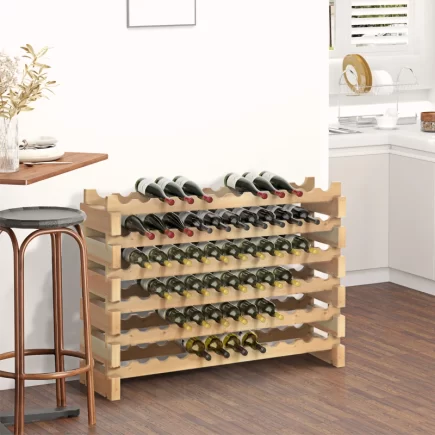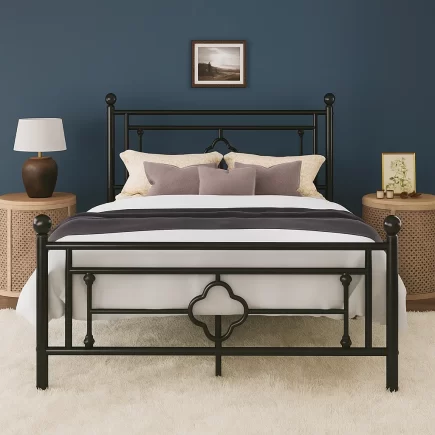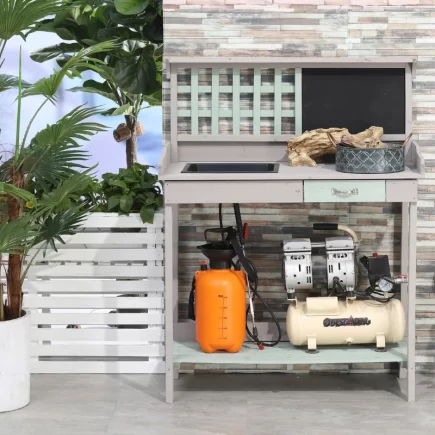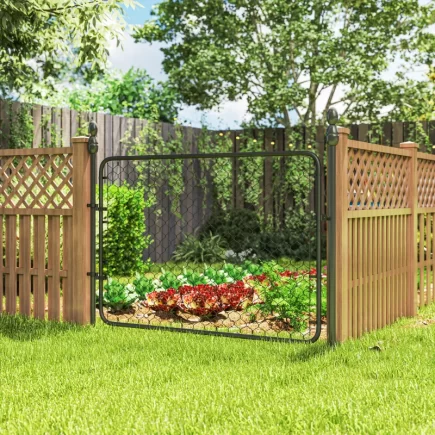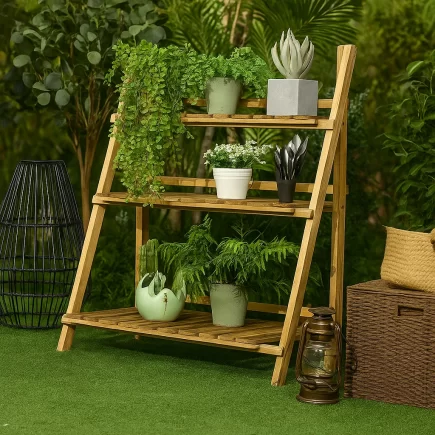A kitchen island cart isn’t just a convenient kitchen add-on, it’s a versatile solution that offers extra storage, workspace, and visual appeal. While you can find many attractive options ready-made, building your own island cart gives you full control over the design, size, finish, and functionality.

Whether you’re a seasoned DIYer or just getting started, this guide will walk you through the entire process of crafting a durable, stylish cart that meets your exact kitchen needs.
Materials and Tools Needed
Before starting your project, gather all tools and materials. Precision and preparation are key.
Tools Checklist
| Tool | Purpose |
| Measuring Tape | For accurate layout and cuts |
| Power Drill/Driver | Drill pilot holes and screw assembly |
| Circular/Table Saw | Cut lumber to specified lengths |
| Clamps | Hold components in place |
| Sander/Sandpaper | Smooth all edges and surfaces |
| Wood Glue | Strengthen joints |
| Square | Ensure 90-degree alignment |
| Screwdriver | Fasten hardware securely |
Wood and Hardware Materials List
| Material | Quantity | Dimensions / Notes |
| Hardwood Boards | Varies | For top, legs, drawer faces |
| Plywood Panel | 1 | For the bottom shelf (approx. 38.5″ x 18.25″) |
| Wood Slats (for shelf) | 8-10 | 0.5″ spacing, ~38.5″ wide |
| Drawer Slides (optional) | 2 sets | Smooth drawer operation |
| Drawer Handles | 2 | 14″ L x 4.5″ W x 2.5″ H |
| Wood Screws | Box | Various lengths (1″, 1.5″, 2″) |
| Caster Wheels | 4 | 2″ diameter, with 2 lockable |
| Towel Rack Bar | 1 | Optional, attach to side |
| Stain/Paint + Sealant | As needed | For finishing and protection |
Step 1: Cut and Prepare Your Wood
To begin building your kitchen island cart, start by selecting and cutting your wood. Pine and maple are excellent choices due to their affordability and ease of cutting, making them perfect for both beginners and experienced DIYers. If you want added strength and a more premium finish for the countertop, consider using hardwood such as oak or birch.

Start with your measuring tape and pencil to mark your cuts according to the following specifications:
- Four legs, each measuring 36 inches in height and 1.5 inches square. These will support the frame.
- A top panel cut to 42.25 inches long by 20.5 inches wide, with a thickness of 0.75 inches.
- Two drawer fronts, each 18 inches wide and 3.25 inches high.
- Two drawer sides, each 17.25 inches long and 2.75 inches high.
- Eight to ten slats, each 38.5 inches long and 1.5 inches wide, spaced evenly to form the middle shelf.
- A bottom panel cut to 38.5 inches long by 18.25 inches wide, which will serve as the solid lower shelf.
- The shelf supports custom-cut to fit the interior width of the frame and hold up the shelves.
Once all pieces are measured and marked, use a circular saw or table saw to make clean, straight cuts. After cutting, use a carpenter’s square to double-check that all edges are square and true. This is especially important for structural pieces like the legs and top panel.
Step 2: Build the Outer Frame and Rails
Assemble Side Legs and Long Rails
With your wood cut and sanded, begin constructing the frame. Lay two legs flat on your work surface with the inside edges facing each other. Take one of the long horizontal rails and position it between the top ends of the legs.
Apply wood glue at the joints, and then secure the rail using 1¼-inch pocket-hole screws. Clamp the legs and rail together as you drive in the screws to keep everything square. Repeat this process with the other two legs and the second long rail.

Form the Top Frame with Short Rails
Now you have two identical side assemblies. Set these upright and attach them using shorter rails between the front and back legs. These should also be flush with the tops of the legs, creating the upper box frame.
Again, use glue and pocket-hole screws to secure the joints. Use a carpenter’s square frequently to ensure all corners remain at perfect 90-degree angles.
Install Lower Stretchers
Below the upper frame, mark a horizontal line 3 inches from the bottom of each leg. This is where the lower long stretchers will go. Position each lower rail so the bottom edge aligns with the pencil line.
Mark any needed miters to ensure a flush fit with the legs, cut accordingly, and drill pocket holes. Secure the rails with glue and screws.
Attach Short Lower Stretchers
Repeat this process for the short side rails and stretchers. With all four legs connected by the top and lower rails, your frame should now be sturdy, square, and ready to receive the cleats and shelves.

Step 3: Install Cleats and Assemble the Lower Shelves
Slatted Middle Shelf
To support the slatted middle shelf, begin by cutting two cleats to match the length of the lower long rails. Use a spacer to help ensure the top of each cleat will sit flush with the bottom of the stretchers.
Apply wood glue to each cleat, position it against the inside face of the stretcher, and secure it using 1¼-inch nails or screws.
Next, install the shelf slats from the outside in. The outermost slats will need to be notched to wrap around the legs. Use a jigsaw to make these notches, taking care to test-fit before securing.
Once you have the outer slats in place, space the remaining slats evenly approximately 0.5 inches apart and secure each one to the cleats using wood glue and nails. This method ensures strong support and a balanced appearance.

Bottom Solid Shelf
The solid bottom shelf rests directly on the lower stretchers. Cut a plywood panel to 38.5 inches by 18.25 inches. Lower it into place carefully, making sure it fits snugly inside the frame. If you’d like a more recessed appearance, trim the corners slightly or use notches so the panel rests within the rail boundaries. Once positioned, fasten the shelf to the stretchers using glue and countersunk screws spaced evenly around the perimeter.
Step 4: Construct and Install the Drawers
- Assemble drawer boxes using the side, front, and back panels.
- Use glue and nails or screws to hold them together.
- Attach the bottom using thin plywood.
- Mount inside the top compartment using wood runners or drawer slides.
- Align the drawer fronts and attach handles.
Helpful Tip: Apply wax or use metal runners to improve sliding.
Step 5: Attach the Countertop
Cut the Top Panel
To prepare the countertop, start by cutting a panel of hardwood or high-quality plywood to 42.25 inches in length and 20.5 inches in width, with a thickness of 0.75 inches. Use a circular saw or table saw with a fine-tooth blade for a clean, precise edge.
Sand the Surface
After cutting, run a sander over all sides and corners to smooth out any rough spots, especially if the top will be used for food prep. Round over the edges slightly for a more refined look.

Clamp and Position the Top
Place the finished panel on top of the cart’s frame. Center it carefully so there’s a slight, even overhang on all sides that not only looks polished but also helps protect the underlying frame. Once it’s positioned properly, use clamps to hold the panel firmly in place.
Attach Securely
From underneath the cart, drill pilot holes through the top rails of the frame into the underside of the panel. Then, drive screws up through the rails to attach the top securely, keeping the fasteners hidden from view. Make sure to space the screws evenly for solid support.
Step 6: Add the Towel Rack
- Measure and mark holes on one of the short sides.
- Drill pilot holes and attach the towel bar.
Style Note: Choose a chrome or matte black bar for contrast against wood.
Step 7: Install Caster Wheels
- Turn the cart upside down.
- Screw caster wheels into each corner, ensuring balance.
- Choose 2 wheels with locking mechanisms for added stability.
Step 8: Finishing Touches
Sanding
- Use fine-grit sandpaper (220-grit) to remove sharp edges.
- Dust off all surfaces before finishing.
Painting or Staining
When your kitchen island cart is fully assembled and sanded, it’s time to give it a finish that not only protects the wood but enhances its visual appeal. There are three main options to consider, each serving a unique aesthetic and functional purpose.
Painted Finish
If you prefer bold colors or want your cart to match a specific color palette in your kitchen, painting is the way to go. Paint provides full coverage and is perfect for modern or eclectic kitchen styles. Use a primer first, then apply 2–3 thin coats of your chosen paint.

Congratulations, you’ve just created a stunning, mobile, multi-functional kitchen island cart with built-in drawers, two shelves, a towel rack, and a durable top. Not only is this piece highly functional, but it’s also a personalized touch that enhances your kitchen’s visual appeal and organization.
Feel proud of your craftsmanship, and don’t hesitate to explore more designs and inspirations at Aosom’s Kitchen Island Cart Collection for your next DIY project or complementary purchases.
FAQs
1. Is it okay to skip the drawer installation and just use open shelves?
Yes, if you prefer open storage or want to simplify the build, you can omit the drawers entirely. This will save time and materials and still give you accessible storage.
2. Can I install hooks or rails for utensils instead of a towel rack?
Definitely. The towel bar area can be replaced or expanded with hooks, magnetic strips, or even a spice rack customize it based on your kitchen habits and what you reach for most.
3. Can I add electrical outlets to my kitchen island cart?
Yes, but this requires advanced DIY or professional help. You can use a surge-protected power strip mounted to the cart, or have an electrician install a built-in outlet if the cart will be stationary near a wall plug.

